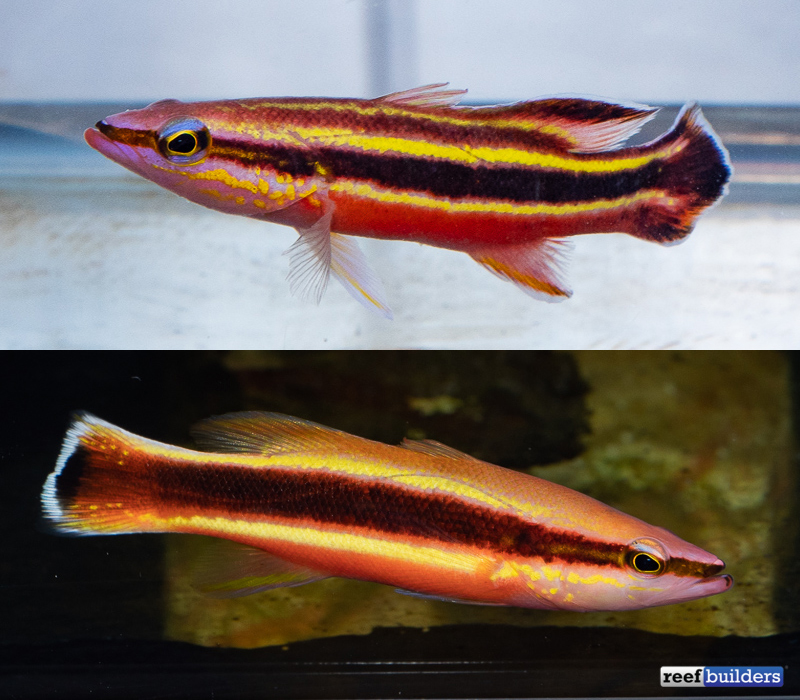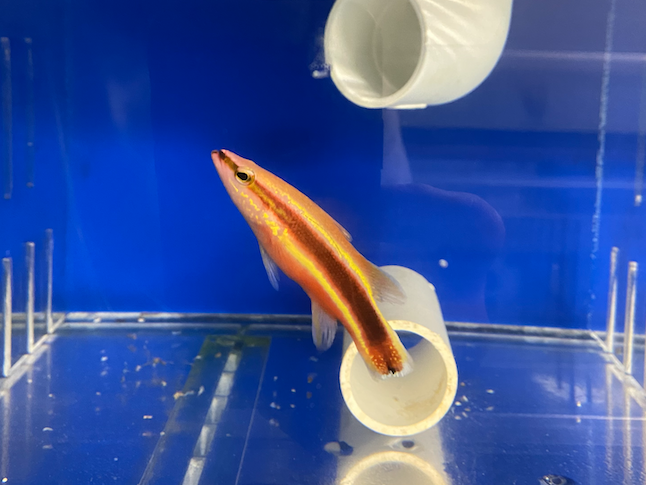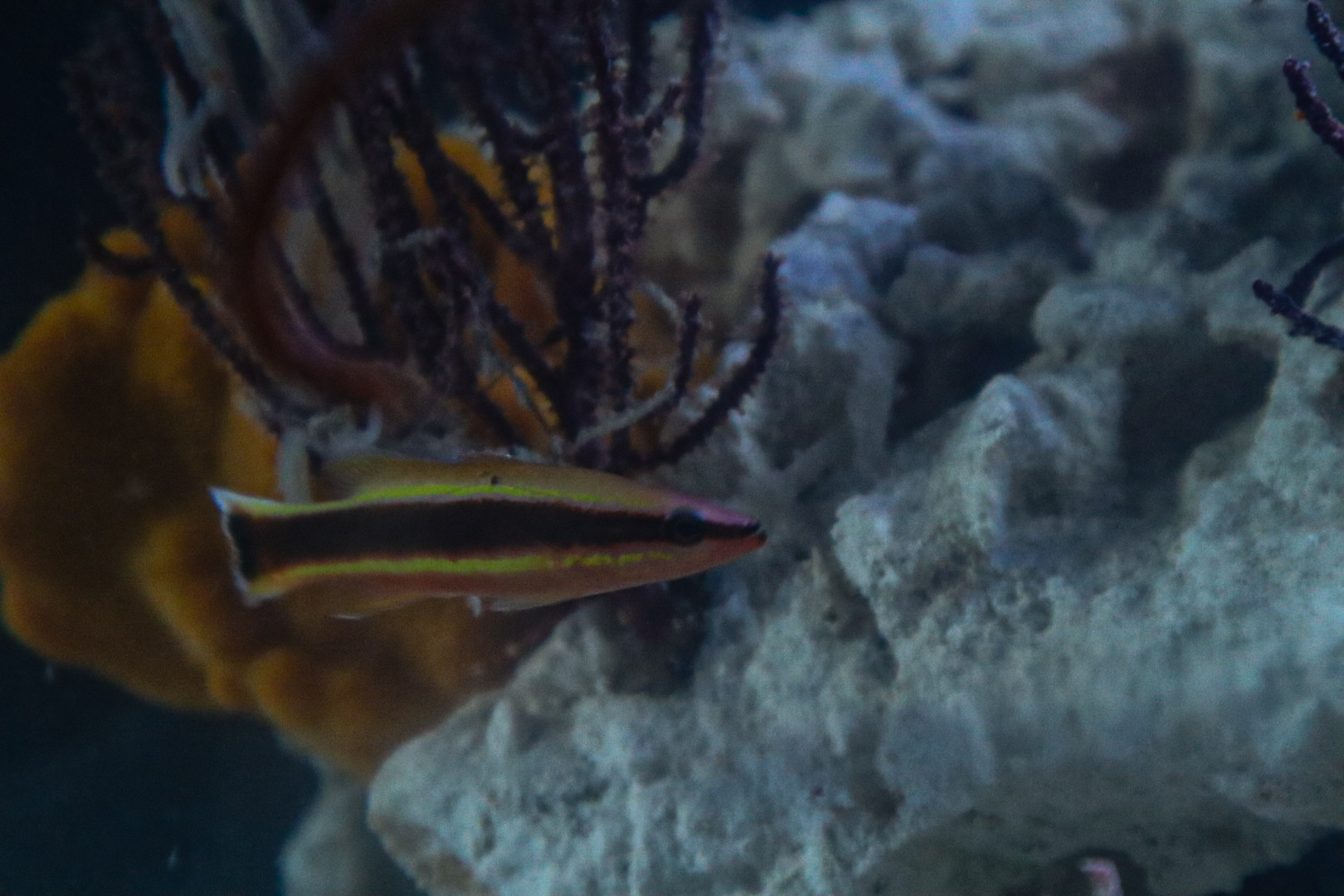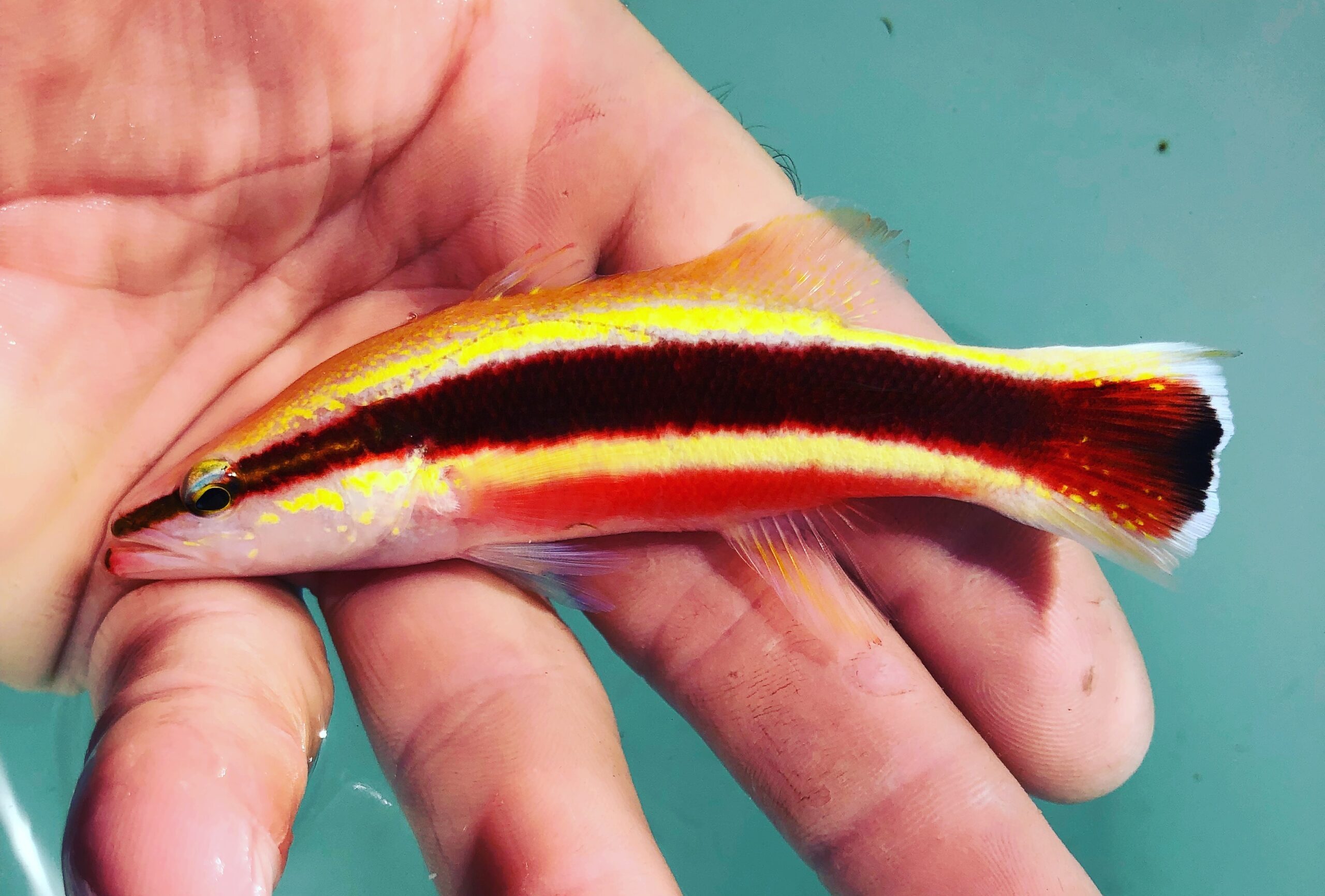Liopropoma eukrines, otherwise known as the Wrasse Bass is a beautiful Liopropoma that comes from the depths of the Caribbean. Its sheer color makes it stand out to divers and aquarists. This fish is not to be confused with the Rainbow Bass, Liopropoma fasciatum. Although these two specimens almost look like they could be twins, they are not. The Rainbow Bass is found in the Eastern Pacific Ocean; while the Wrasse Bass is found in the Caribbean. Wrasse Basses are a rare Liopropoma in our hobby, but they are actually quite common throughout the deeper reefs of the Caribbean.
The Wrasse Bass inhabits deep reefs and has been observed at eighty feet to about five hundred feet deep. This reason alone is one of the main reasons that we do not see this species more often in the hobby. They also appear shy to divers and tend to take cover relatively quickly. Their habitat includes ledges, caves, sponges, and crevices, and they are generally observed singly or in pairs. They are rarely seen in the trade due to the effort that goes into collecting them since they reside at quite a depth and because of their ability to disappear on divers so quickly; in general, these are the reasons that we rarely find them for sale in the hobby.

When they are collected and make their way into the trade, hobbyists can expect to pay a hefty price to acquire one of these specimens. The average price of a Wrasse Bass ranges from about two hundred dollars up to about five hundred dollars. Many collectors in the hobby seek these out due to their colors, rarity, and just the fact that they are “deepwater” fish. Some sites that are known to sell these fish accept down payments before acquiring them because of how dangerous and challenging it can be to collect such a fish. I know from experience collecting in shallow water that collecting fish of any kind can be rather challenging and quite time-consuming; collecting at significant depths where just one wrong move or a simple mistake can cause serious injury or death makes things much more challenging. Having said that, keep these things in mind if you’re planning on buying one of these specimens because they can be quite expensive!

If you are fortunate enough to acquire one of these specimens, the Wrasse Bass is a rather hardy fish in the aquarium trade. I personally feed both my specimens a range of Mysis-Feast, Beta-Brine, and live saltwater ghost shrimp. One is currently residing in my “Deep Reef” which is about forty-five gallons and mimics its natural environment. My other specimen is housed in my Caribbean Reef Tank, which is about seventy-five gallons. Both specimens eat about three times a day as they have a rather high metabolism and definitely seem to enjoy their meals. I would personally recommend keeping the Wrasse Bass in a tank of at least forty gallons or larger as I have seen a few specimens collected that were upwards of five inches.
Also, when considering tank mates for them, keep in mind that they will eat ANYTHING that will fit into their mouths! Be sure to stock the tank with residents that are too large to be eaten. Shrimps and even crabs should be avoided unless the shrimps are quite a bit larger than your specimen. Thankfully, it is easy to keep these fed because they take to frozen and liquid foods rather quickly! In fact, mine were eating prepared food only a few moments after I released them into their systems. Furthermore, I would highly recommend keeping a lid on the system you plan on keeping these specimens in as they can and will jump! You wouldn’t want such a beautiful and expensive fish to go out like that!

If you’re looking to make a specific tank for a Wrasse Bass, I would recommend going with an NPS tank with lower light as these come from rather deep reefs. I would also recommend giving them plenty of hiding spaces to mimic their natural habitat. Therefore, keep in mind when scaping the tank to be sure to leave many caves and crevices to enable your fish to feel right at home. My specimen that resides in my “Deep Reef” is housed with an Orange Back Bass pair and a Pygmy Cherub Angelfish. I also tried my best to mimic a deeper reef setting with many NPS gorgonians, corals, and invertebrates that may be found at depths where the Wrasse Bass is located. If you’re going with the biotope approach, simply source species that are taken from the same areas that these Wrasse Basses are collected in. Also, keep in mind that I do not recommend housing with other Liopropoma species unless you have ample space for them to have their own territories.
These fish can be such a rewarding Liopropoma species to keep. They are pretty, uncommon, and so very unique! Be sure to keep your eyes out and save to be prepared because while these are rarely available and fairly expensive when they do happen to hit the market, they usually don’t last long at all! So, if you are interested, keep your eyes out and take action when you find a specimen available!



